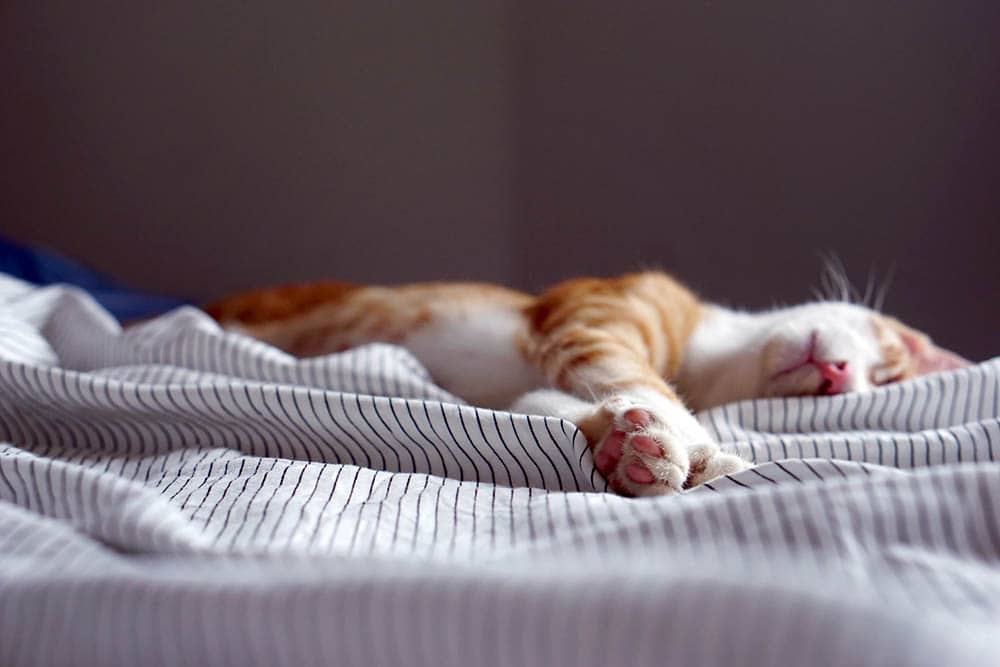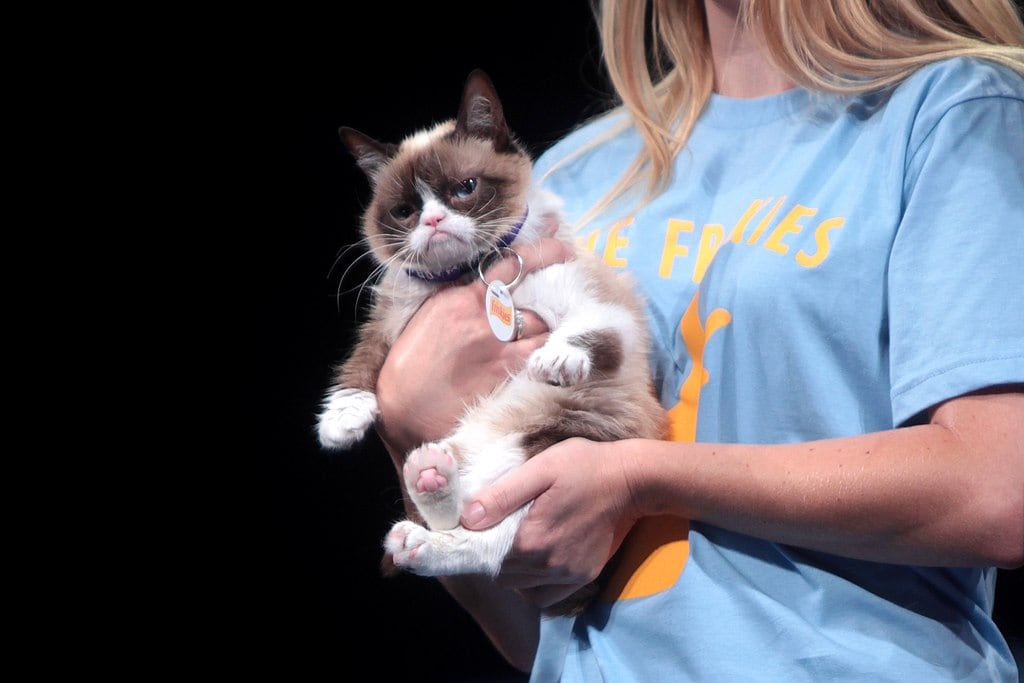Why Do Cats Loaf? 3 Likely Reasons
Updated on
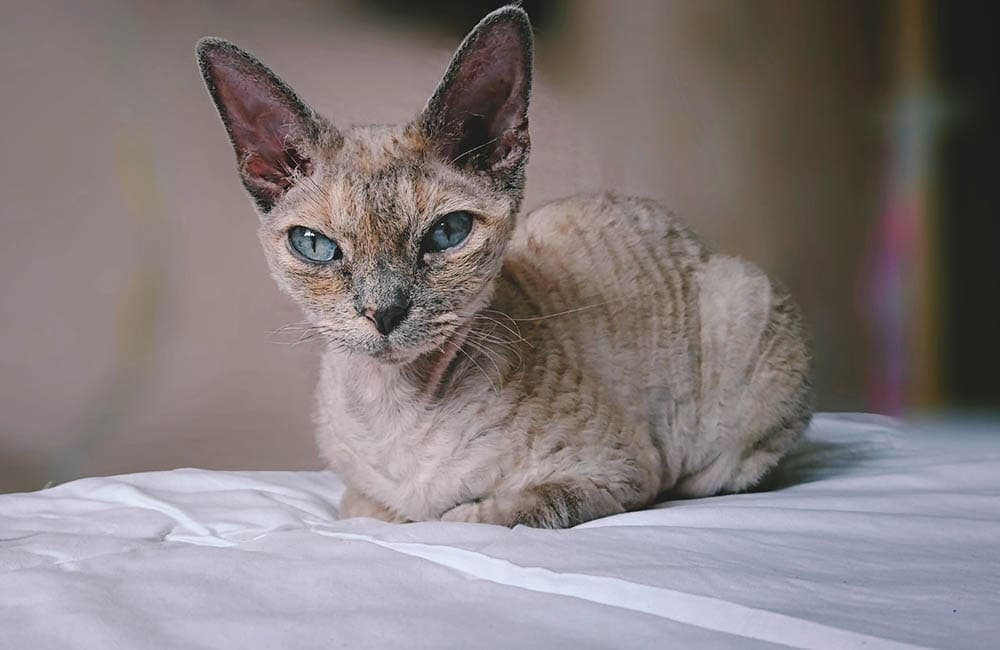
When you hear “bread loaf” in relation to cats, the image of a cat in the bread loaf position immediately comes to mind if you’ve spent more than five minutes with them. Cats are routinely spotted in the adorable loaf position that consists of their legs being tucked up underneath the body and the tail pulled tight against the body or underneath it. When cats are in this position, they simply look like a loaf of warm, toasty cat.
It’s an odd position when you really think about it. After all, dogs don’t sit in a loaf position, and most other animals don’t either. Surely there’s a scientific reason for cats to sit this way. It’s consistent across the majority of domestic cats, and even many wild cats, with the exception of big cats. So why do cats sit in this unusual position?
 The 3 Reasons Why Cats Loaf
The 3 Reasons Why Cats Loaf
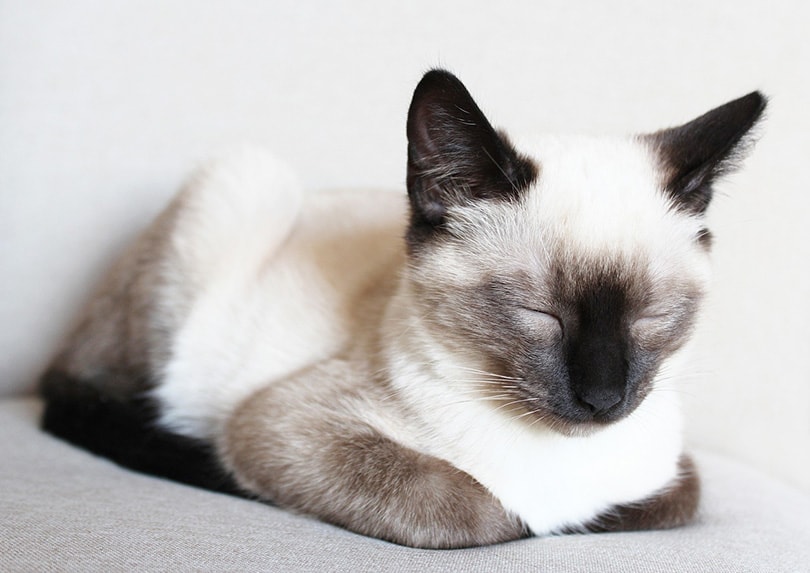
You might be surprised to know that there are multiple reasons for cats to sit in this position, and it can indicate both positive and negative things. It’s important to understand other parts of your cat’s behavior to help you determine what the reason for the loaf position is.
1. Heat Retention
Is it cold in your house or is it wintertime? Cats routinely sit in the bread loaf position to help them retain body heat. The reason for this is because cats have a higher base body temperature than people, so they require more energy to maintain their body temperature. Sitting in this position helps trap body heat around the paws and belly, warming both and keeping the radiant body heat close to the body.
2. On Alert
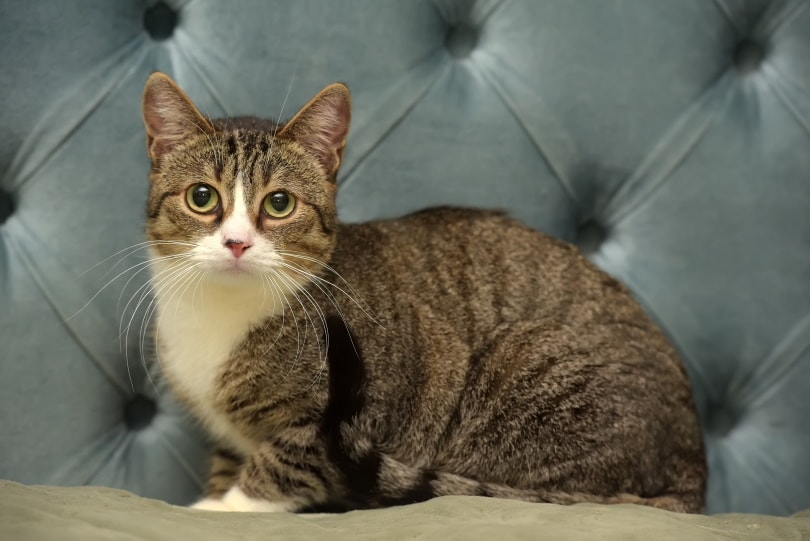
Sometimes, cats that are happy and relaxed will sit in this position, but it’s just as likely for a cat to sit this way because they are on alert. If there is something worrisome or interesting happening in your home, then your cat may sit in this position instead of curling up in a cozy spot. This allows them to rest while still keeping an eye on the action. It also allows your cat to jump up quickly and run if needed.
3. Sign of Discomfort
Another possible cause of this position is your kitty telling you they aren’t feeling well. If your cat is uncomfortable, especially with internal discomfort like stomach pain or cramping, they may sit in this position in an attempt to relieve their discomfort and guard the belly, which is one of the most vulnerable areas on a cat.
What Does the Bread Loaf Position Say About Your Cat?
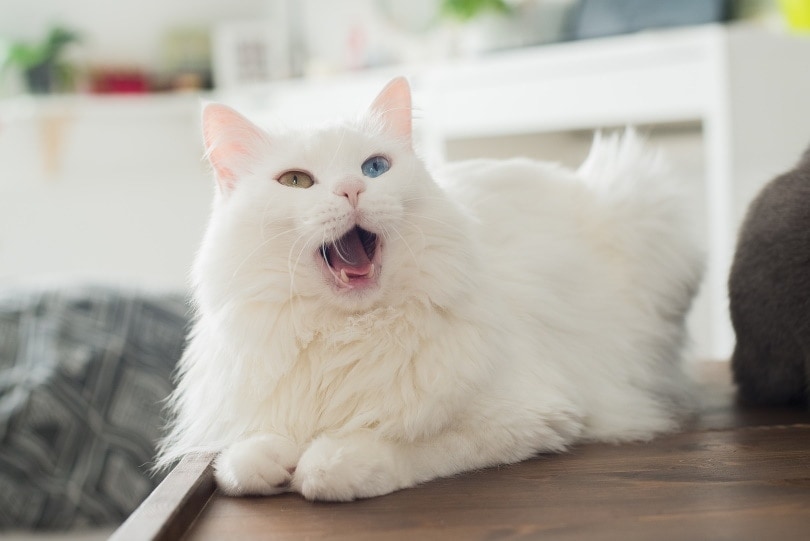
Sitting in the bread loaf position can say a lot about your cat, but you’ll need to have a good idea of their baseline normal behaviors to determine what it means. If it’s cooler than normal or your cat is hanging out in a drafty room, then it’s very possible they’re just sitting in this position to warm their toes and belly while retaining body heat.
If your cat spends a lot of time in this position normally, it’s likely because they are relaxed and happy. If you notice your cat in this position at a specific time of day every day, like early in the morning while they look out the window, then your cat may be on alert while they birdwatch or monitor the morning activities in the home. If your cat seems jumpy or you notice rapid ear and eye movements, then your cat may be nervous or agitated. If your cat appears relaxed and is dozing off in this position, then they’re likely happy and comfortable in the position.
It’s important to know your cat well, though. If your cat is in pain or discomfort of some sort, they may sit in this position. It won’t mean much to you unless you notice other behaviors with it, like excessive purring or staying in the position through mealtimes. If your cat doesn’t typically sit in this position and suddenly starts doing it, then it’s a good idea to begin taking mental notes of their other behaviors, just in case you need to take your kitty to the vet. Restlessness, inappetence, agitation, irritability, lethargy, and other unusual behaviors in conjunction with the bread loaf position are cause for concern.
What if My Cat Is in the Bread Loaf Position with Their Head Down?
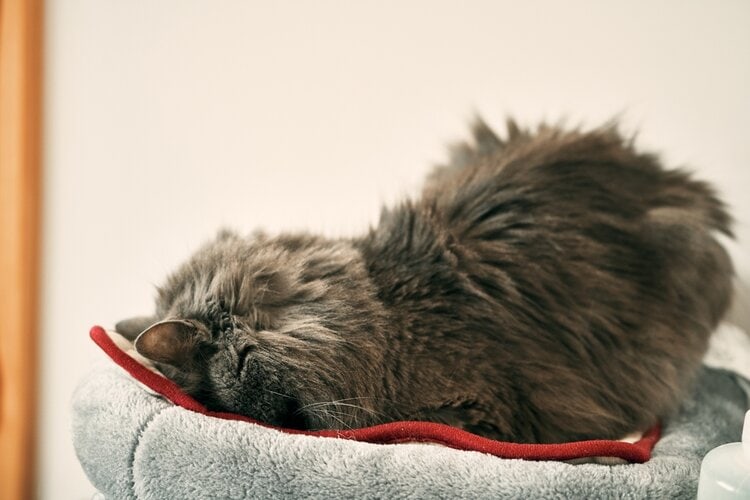
If your kitty begins sitting like a loaf but is turning their face downward and pressing their nose or face against the floor, then you’re seeing the “meatloaf” position. Some cats sit like this simply because they like it, but if it’s a new behavior for your cat, then it’s likely that your cat is in pain. Since cats can’t tell us when they’re hurting, we have to understand their pain behaviors. The meatloaf position is a classic pain sign in cats and should be evaluated by a veterinarian.
 Conclusion
Conclusion
The bread loaf is just another adorable and curious behavior that cats exhibit. Typically, this position is benign and indicates happiness, relaxation, a sense of safety, alertness, or curiosity. However, this isn’t always the case, so it’s important to be able to identify when your cat is loafing because it’s in pain. Our cats rely on us to read their body language to provide them proper care, and becoming familiar with your cat’s habits and behaviors will help you when it comes to determining if your cat is happy, anxious, or sick.
Featured Image Credit: Andrew Brandy, Unsplash
 The 3 Reasons Why Cats Loaf
The 3 Reasons Why Cats Loaf